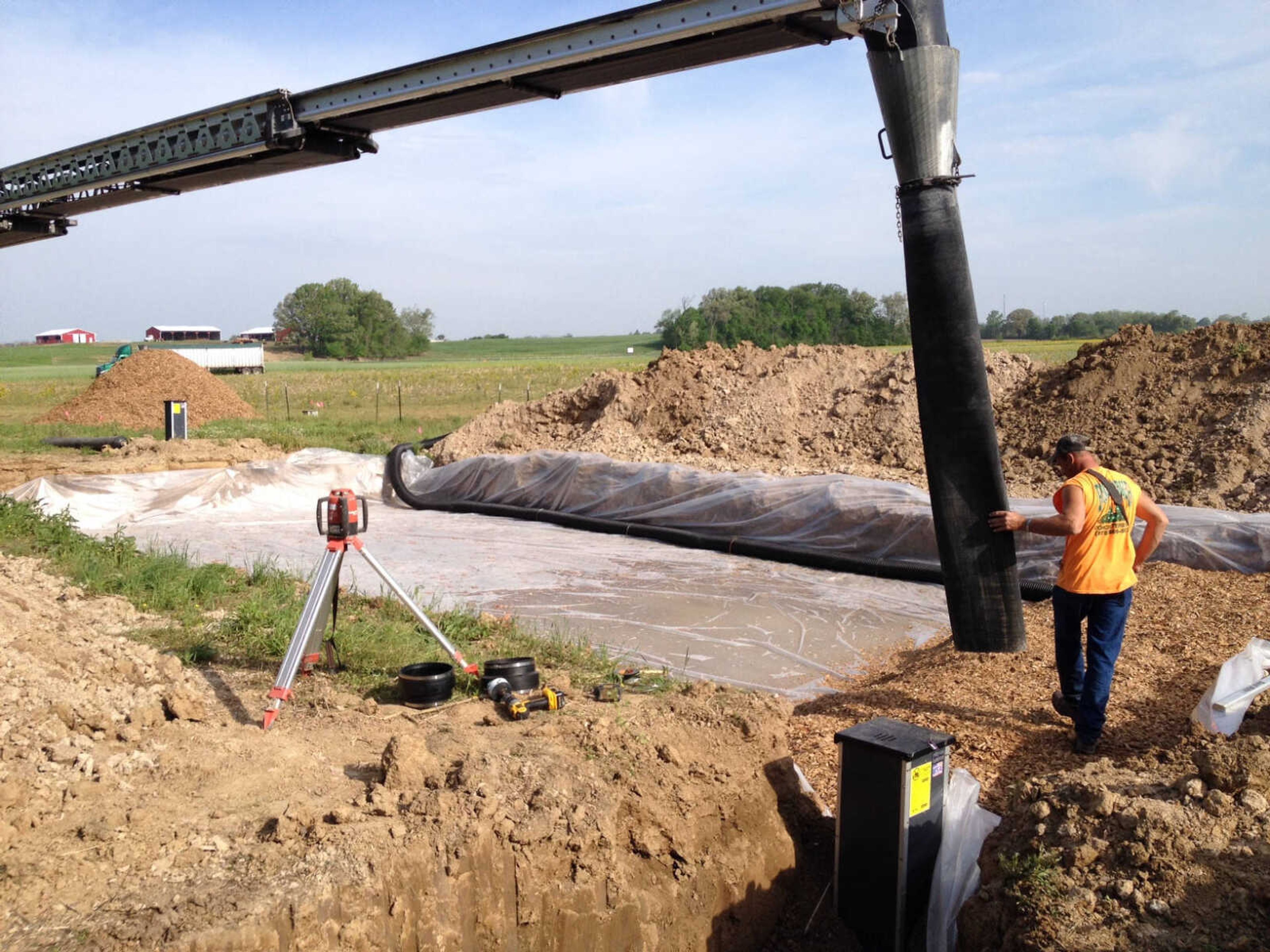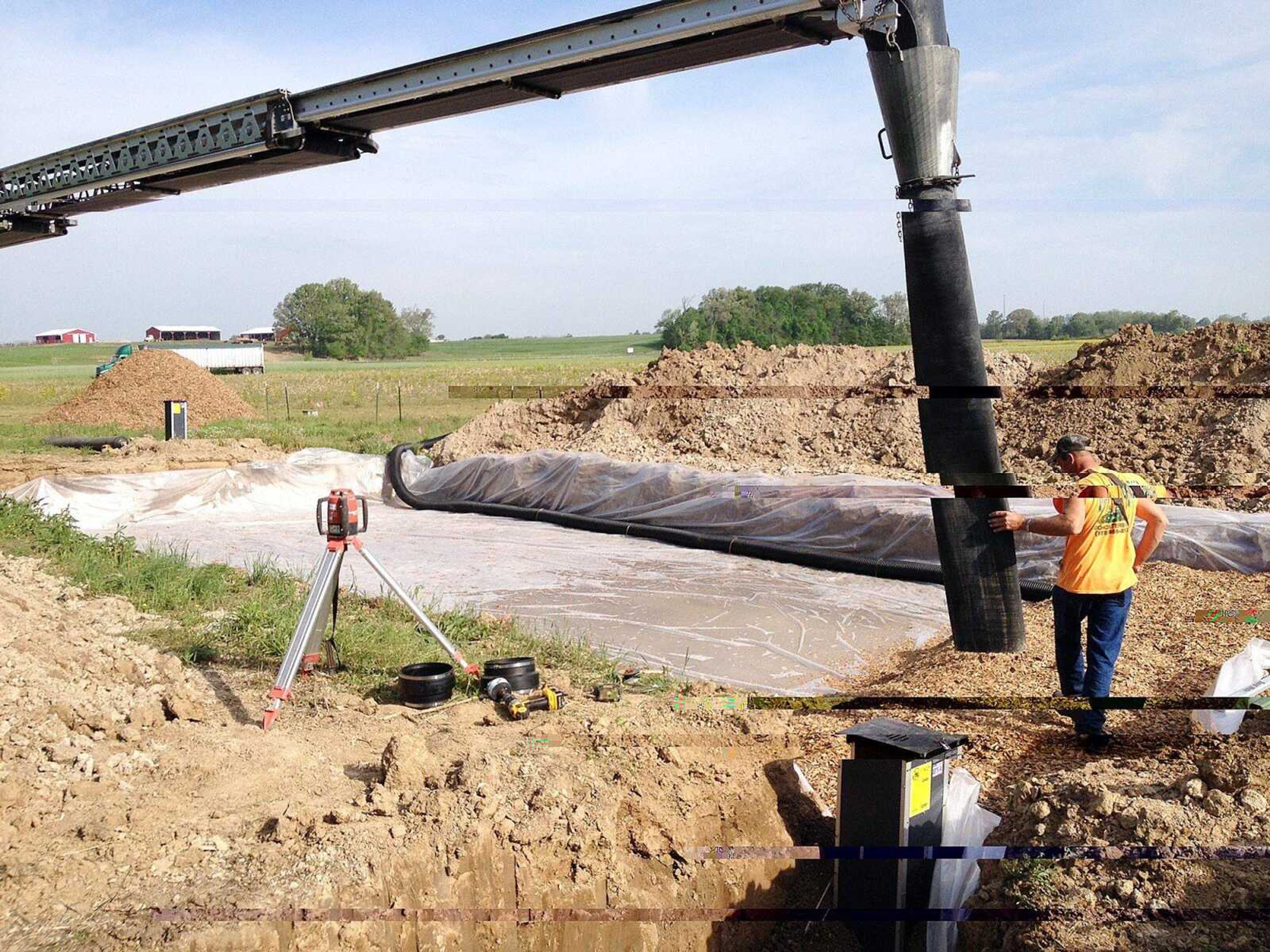Bioreactor could eliminate some farm byproduct runoff
In an effort to decrease nitrate-nitrogen levels in waterways, Southeast Missouri State University's David M. Barton Agriculture Research Center in Gordonville has set up a bioreactor -- an underground chamber designed to remove nutrients from farm fields fitted with subsurface drainage systems...
In an effort to decrease nitrate-nitrogen levels in waterways, Southeast Missouri State University's David M. Barton Agriculture Research Center in Gordonville has set up a bioreactor -- an underground chamber designed to remove nutrients from farm fields fitted with subsurface drainage systems.
The bioreactor was installed last week by Kiefner Brothers of Cape Girardeau. Nitrogen and phosphorus are primarily byproducts of fertilizers and decomposing crop residues. However, some of these nutrient concentrations are derived naturally from the soil, Michael Aide, chairman of the Department of Agriculture at the university, said in an email to the Southeast Missourian.
"We have the largest controlled subsurface drainage irrigation system in the United States. It's set up for research, and for five years we've been using fertilizer practices in controlling the water during the winter to limit nitrogen leaving the farm," Aide said.

Using the bioreactor in conjunction with what has been learned about managing fertilizer and using cover crops, "we will be able to essentially eliminate nutrient migration from a farm. That's the goal," Aide
said.
Ten parts per million nitrate-nitrogen is the U.S. Environmental Protection Agency's standard for drinking water, but such levels still can be harmful to fetuses and babies. Runoff from fields and farms has been implicated in creating Gulf Zone hypoxia -- coastal estuaries with low oxygen content -- and weed growth in rivers and streams that run into the Gulf of Mexico, Aide
said.
Bioreactors, Aide said, promote a "microbiological community that will sequester, or tie up, the nutrients so that they don't enter freshwater supplies."
"Essentially, I will be cleansing the watershed. It is that good, so all the water I put in will be pristine water. That's what I think is the big deal," he added.
"The potential environmental ramifications are huge in that if American agriculture is no longer perceived as contributing nutrients to ecosystems, then everybody is going to benefit. To give you an example, 30 years ago soil erosion was contributing soil into streams that would then go into bigger rivers, causing pollution, because sediment is [considered] pollution," he said. "With the prevalence of no-till agriculture, agriculture is no longer a major soil erosion producer. The technology with conservation tillage is basically eliminating the issue. The same is going to happen with nutrient migration."
Mark Nussbaum, area engineer for the USDA-NRCS, said the bioreactor at the research farm is 60 feet long, 30 feet wide and 3 feet deep, measured from the surface of the ground. The trench is filled with 2 feet of wood chips topped with 1 foot of soil, Nussbaum said. The wood chips, which have about a 30-year life expectancy, break down nitrates in the water. The water then goes into streams in a pristine state, at least as far as the EPA standards are concerned.
Nussbaum said this is a test version of the bioreactor. "We're very optimistic it will work as advertised, but it [will] certainly be considered a test version. There are more on the East Coast," he said, adding that 40 to 50 reactors are running in the Chesapeake Bay area.
"So the Midwest is playing a bit of catch-up ...," Nussbaum said. He added he's looking forward to the data that will come from the project.
" ... It's appropriate for a research farm so people can come look at it before it goes into general application," he said.
Aide said the USDA approached the university about installing a bioreactor "because you've got the best research facility in the country for doing it right here in Cape." The controlled subsurface drainage irrigation system at the agriculture research center allows surplus water to be removed from the soil during periods of wet weather and supplies water to the soil during dry periods, a university news release said.
" ... We want to bring the farmers onto the Barton farm and show them how this works," Aide said.
" ... But the dominant thrust has been developing best management practices to grow crops that return a profit to the landowner and create environmental stewardship. ... More and more people are coming to our farm to see how it works."
If the bioreactor does what it's supposed to do, Aide said, federal funding eventually could be made available so farmers wouldn't have to bear the entire cost.
Aide said agriculture students will collect data on the bioreactor, and he will work with colleagues in the university chemistry department and agricultural instructors at Lincoln University in Jefferson City, Missouri.
rcampbell@semissourian.com
388-3639
Pertinent address: One University Plaza
Connect with the Southeast Missourian Newsroom:
For corrections to this story or other insights for the editor, click here. To submit a letter to the editor, click here. To learn about the Southeast Missourian’s AI Policy, click here.








